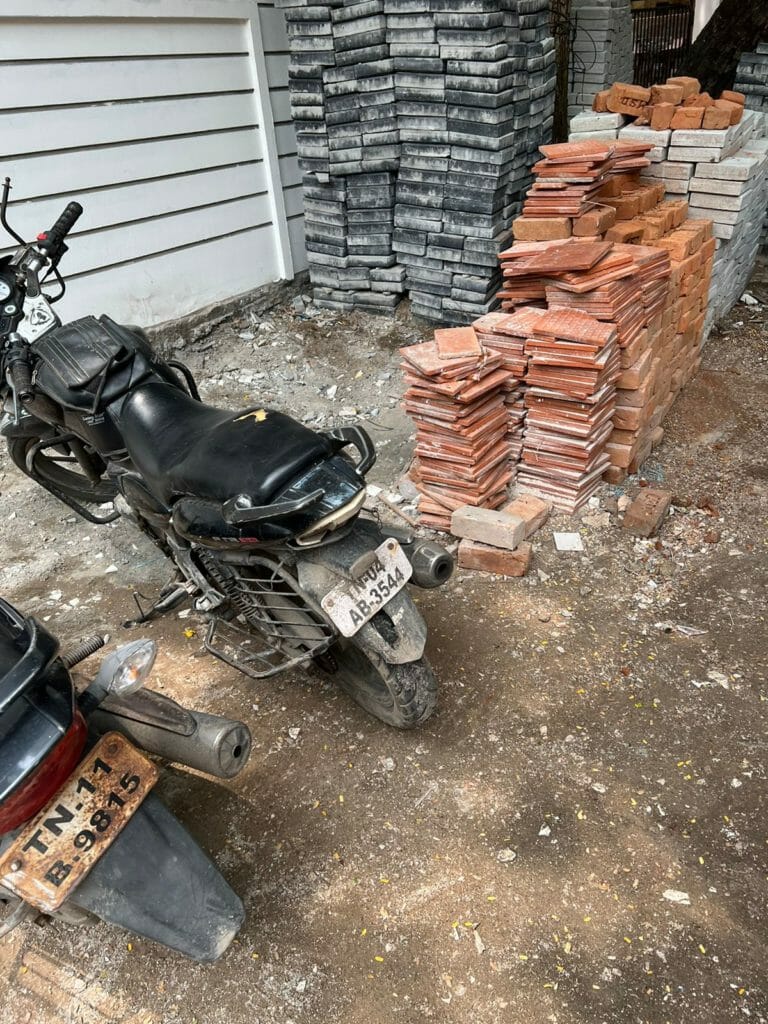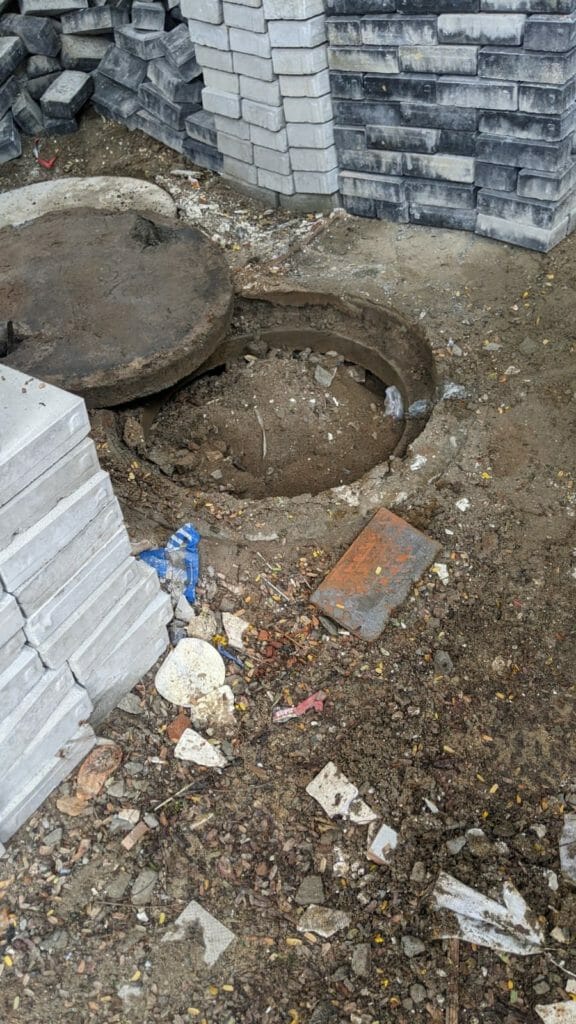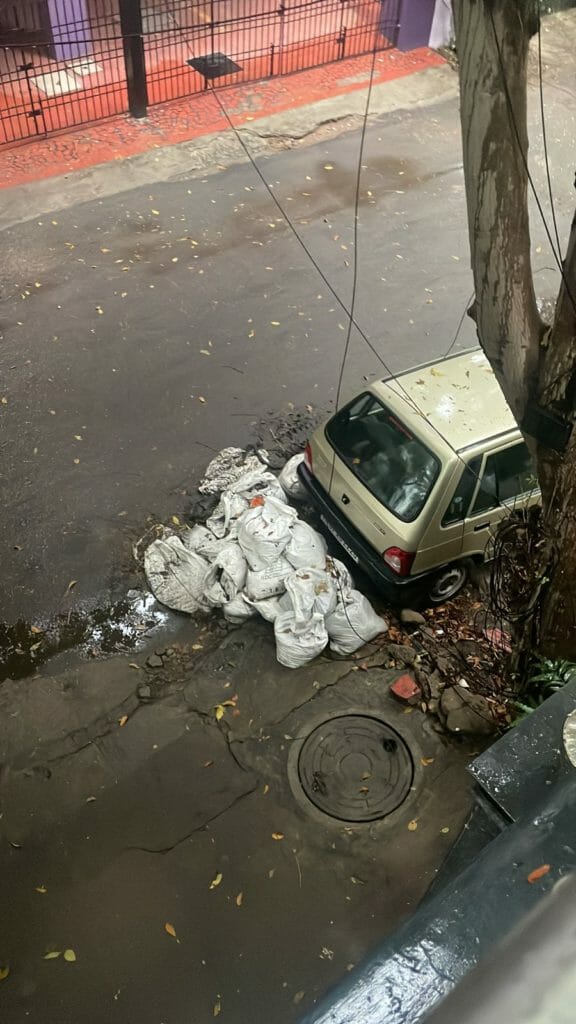Today more than half of Chennai has been dug up for the laying of new stormwater drains (SWD) network to ensure that the city doesn’t get flooded again. But the problem doesn’t end with just laying the drains but in ensuring that they actually serve the purpose for which they are being laid. The Raja Street RWA and Poonga View RWA stepped up to monitor the Mandaveli SWD work thereby avoiding issues around flooding at the time when the rains arrive.
Yearly auditing process of Mandaveli SWD
Clean entry points for the water on the roads to enter them, proper slope and an absolutely clean uninterrupted route right until the final point where it empties are some of the key requirements for efficient stormwater drains. While the civic body has the responsibility to ensure these requirements have been met, proactive residents can do their bit to monitor the proper completion of the work.
Especially when it comes to the inner streets of the city, residents voicing their concerns and pointing out problem areas can help the civic body by pushing for regular desilting. Keeping a close watch on the process would mean the work is done to our satisfaction. The residents have the greatest stake in the process as they are will be ultimately affected by water logging and urban floods.
Read more: ECR residents do not want a storm water drain; here’s why
One of the annual maintenance activities of Mandaveli Raja Street RWA is to request the Greater Chennai Corporation for the desilting of its SWDs and auditing of the SWDs by the residents when desilting is in progress. This practice has held us in good stead as there was no major water-logging in the area even as the city saw issues with floods the past year.
In addition to this, the residents have been proactive enough to also report blocked sewage manholes and get them cleared regularly by the Chennai Metro Water Supply and Sewerage Board (CMWSSB). This would also be a key step to prevent any water stagnation and resultant effects such as health issues, mixing of rainwater with sewage and contamination of groundwater.
The recharge wells in the area and the SWD entry points of the street are regularly monitored and cleaned by the residents themselves.
Monitoring Mandaveli SWD work
This year when SWD desilting started in Raja Street residents shared their observations. About four SWDs points were clogged up to the brim with building debris, a couple of SWD lids were found to be broken, and a few others were completely closed and inaccessible with building material piled on top of it by the builder of a new apartment being built at that location.
The desilting work is a time-critical work wherein a contract is assigned to the contractor to finish the desilting within a stipulated time. If those Mandaveli SWD locations are inaccessible, it has been found that more often than not, no work takes place in those locations which are skipped by the contractor. At this point, it becomes important for the local residents to step in to ensure all locations can be worked upon to prevent future floods.
The residents of Raja Street raised the above issues with the civic body’s desilting team and escalated the issue to the builder’s senior engineer to make the SWD doors accessible, clear the debris and replace the broken lids. The same was also conveyed to the Corporation AE. The AE of Ward 171 responded and inspected the locations. The AE also got the builder to promise to clear the obstruction cleared by them in the SWD network.
The residents’ intervention at the right time has not only been able to identify locations with problems in the SWD network of the area but has also been able to knock on the right doors to fix them. During the auditing, the residents made sure to walk along the entire SWD stretch, capturing pictures to make sure the SWD had the right gradient to prevent backflows and stagnation.
The stormwater drain network of Raja Street further goes to the Raja Street Extension and TP Scheme Road from where the water empties into the Adyar river. This area comes under the Poonga View RWA where again about 10 SWD doors were inaccessible due to cars parked right above them.
Once again, here the civic body’s contractor’s work was stalled as the SWD doors were inaccessible. The onus fell on the residents to find ways to ensure that the work takes place as planned. The Poonga View residents pitched in by listing down the registration number of each vehicle and calls to residents and public announcements to identify the owners of the cars and ask that they be moved.
Read more: All that’s wrong with stormwater drains in Chennai and how to fix them
Issues still remain but residents hopeful
Although some of the vehicles in this location could not be removed in time, many SWD doors were made accessible and one level of desilting could be done. A request was placed by the residents to the GCC that the desilting work should be completed when the other doors are made accessible. Help was also sought from the Traffic Police Department to trace the owners of the vehicles which continued to make the locations inaccessible.
A week has passed since the desilting work was completed in these locations, but the silt bags continue to be piled outside every SWD door. With every instance of rain since the silt in the bags has flowed back to where it came from. The residents had to raise this issue with the AE for it to be resolved.
This was the experience of the residents of a small area in Mandaveli. One can imagine the scale of what would be the story of the rest of Chennai when it comes to the large-scale flood mitigation work that has been taking place.
With the monsoons here already, it’s time residents pitched in to ensure that the infrastructure created for flood mitigation is done so properly and put to use in time. This would go a long way in ensuring that the city is safe and flood-proof.



